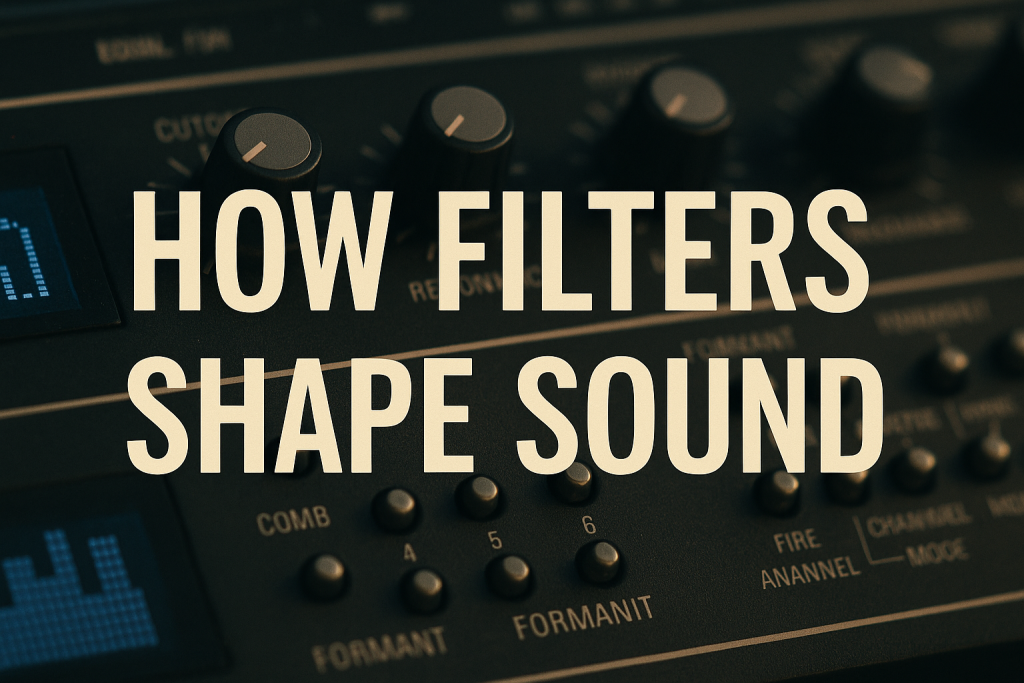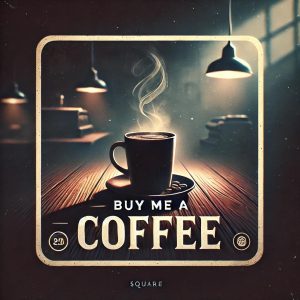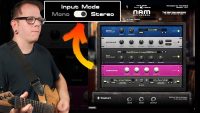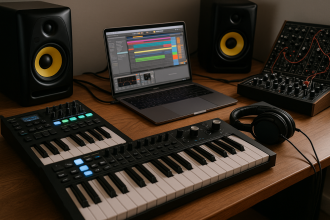Filters are the secret sculptors of sound. From the warm resonance of vintage Moog circuits to the razor-sharp precision of modern digital EQs, filters define tone, character, and emotional impact in music production. Whether you’re crafting a punchy bassline or a dreamy ambient pad, understanding how filters shape sound is essential for every producer.
- 1. What Is a Filter in Sound Design?
- 2. The Legendary Moog Ladder Filter
- 3. State Variable Filters: Flexibility Meets Precision
- 4. Comb Filters: Creating Resonance and Motion
- 5. Formant Filters: Giving Synths a Human Voice
- 6. Digital EQs vs. Analog Emulations
- 7. How to Use Filters Creatively
- 8. The Evolution Continues

1. What Is a Filter in Sound Design?
A filter is a processor that reduces or emphasizes specific frequencies within an audio signal. In synthesis, it’s often the second stage after the oscillator — removing certain harmonic components to shape the final tone.
There are four main types of filters used in subtractive synthesis:
- Low-Pass Filter (LPF): Allows low frequencies to pass, cuts highs.
- High-Pass Filter (HPF): Allows highs to pass, removes lows.
- Band-Pass Filter (BPF): Isolates a specific frequency range.
- Notch Filter: Removes a narrow band of frequencies.
Each type creates a different character and is often paired with resonance — a boost around the cutoff frequency that adds musical energy or “bite” to the sound.
2. The Legendary Moog Ladder Filter
The Moog ladder filter is one of the most iconic designs in music history. Developed by Robert Moog in the 1960s, this low-pass filter became the heart of analog synthesizers like the Minimoog Model D.
Its secret weapon? A smooth, organic roll-off combined with a creamy resonance that can drive into soft distortion when pushed. That “liquid” quality shaped the sound of funk, disco, and early electronic music.
Modern emulations carry this DNA into the digital world:
- 🌀 Arturia Mini V3 – Get it here
- 🔥 u-he Diva – Download Diva
- 🎛️ Moog Model D App / VST – Official Moog Software Synth
Each plugin replicates the warmth and non-linear behavior of Moog’s analog circuits while adding digital conveniences like polyphony and modulation.
3. State Variable Filters: Flexibility Meets Precision
The state variable filter (SVF) takes filtering further, providing multiple outputs — low-pass, high-pass, and band-pass — simultaneously. It’s a favorite among sound designers because it allows complex modulation and routing options.
This type of filter is found in synths known for flexibility rather than vintage warmth. It’s clean, surgical, and precise, making it great for EDM, cinematic sound design, and techno.
Try these VSTs featuring powerful SVF designs:
- Surge XT (Free) – Download Surge XT
- Pigments by Arturia – Get Pigments
- Phase Plant by Kilohearts – Explore Phase Plant
4. Comb Filters: Creating Resonance and Motion
A comb filter is formed by mixing a signal with a delayed version of itself, creating a series of notches or peaks in the frequency spectrum — like the teeth of a comb.
This effect produces metallic, resonant, or flanging tones. It’s ideal for turning simple waveforms into shimmering textures or re-creating the resonances of acoustic instruments.
Plugins that showcase comb filtering beautifully:
- FabFilter Volcano 3 – Check Volcano 3
- Valhalla Space Modulator (Free) – Download Valhalla Space Modulator
- ZynAddSubFX (Free) – Download ZynAddSubFX
5. Formant Filters: Giving Synths a Human Voice
Formant filters simulate the resonant frequencies of the human vocal tract — giving instruments that “talking” or vowel-like quality. You’ll hear them in genres from electro-funk to dubstep (“wah” or “yeah” basses).
They’re not just for vocals — formant filters can bring life to leads, pads, and even percussion.
Try these expressive formant-capable synths and plugins:
- FilterFreak by Soundtoys – Get FilterFreak
- u-he Zebra2 – Discover Zebra2
- TAL-Filter-2 (Free) – Download TAL-Filter-2
6. Digital EQs vs. Analog Emulations
Modern digital filters and EQs have evolved far beyond analog replication. While analog filters aim to capture “warmth” and imperfection, digital EQs like FabFilter Pro-Q 3 or Tokyo Dawn Nova offer linear-phase precision that’s impossible in the analog world.
- FabFilter Pro-Q 3 – Learn More
- TDR Nova (Free) – Download Nova
- SSL X-EQ 2 – Get SSL X-EQ 2
The modern producer’s toolkit combines both: analog-inspired tone for musicality, and digital EQs for clean precision.
7. How to Use Filters Creatively
Filters aren’t just about removing frequencies — they’re about movement. Automate them, modulate them, and let them evolve with your track.
Here are a few creative uses:
- Filter Sweeps: Automate cutoff for tension and release in EDM drops.
- Rhythmic Gating: Sync filter modulation to tempo for pulsating effects.
- Resonant Accents: Use high resonance settings for percussive plucks or talking leads.
- Parallel Filtering: Blend multiple filter types for hybrid tones.
For creative modulation, try:
- ShaperBox 3 by Cableguys – Get ShaperBox 3
- Movement by Output – Explore Movement
8. The Evolution Continues
From Moog’s ladder filter to today’s dynamic EQs, filters have continuously evolved — but their role remains the same: to shape sound, emotion, and texture. The warmth of analog or the precision of digital isn’t a choice between right and wrong — it’s a matter of taste, context, and creativity.
Experiment with both worlds. Let your filters sing, scream, whisper, or disappear. Because in the end, filters don’t just shape your sound — they shape your identity as a producer.
![]()

















